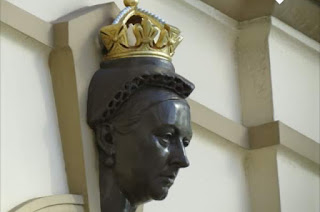Search This Blog
Showing posts with label North Sydney. Show all posts
Showing posts with label North Sydney. Show all posts
Monday, March 15, 2021
Friday, March 13, 2020
Don Bank Museum - 6 Napier Street - North Sydney
Don Bank Museum
6 Napier Street
North Sydney
Don Bank isn’t early 19th century vernacular timber slab cottage – the only one of its type surviving in North Sydney.
It was originally a forum cottage and there is evidence that suggests that the house may have existed on the site before 1854. Records confirm that, by that time, the land was occupied by four rooms dwelling with detached and outbuildings. It is called Saint Leonards college – so named because much of present-day North Sydney was then known as Saint Leonards.
The house was located on a new subdivision of the Wollstonecraft/Berry estate, a large area of land granted to Edward Wollstonecraft in the 1820s and owned by his partner Alexander Berry from the 1840s. As this area was still relatively undeveloped quality, the cottage on the rise views of the harbour.
From 1854 until the early 20th century the house underwent many extensions and renovations. The buildings were incorporated into the house in later removed. And iron roof was placed over the timber shingles. Rooms were added on either side of the old four room cottage. The cottage was transformed through these changes into a substantial bungalow style dwelling by the turn of the 20th century-very similar to the house survives today.
Don bank was owned and occupied by members of the white family for much of these later decades. For these devout Catholics-part of the highest DS Bora of the midnight mid 19 century the house was in an ideal location
Don banks interior
Interior decoration and building permit also changed is the house expanded during the 19th and 20th centuries. Through its changing history the house reflected the growing prosperity in the region and its inhabitants. It was built in the lower Northshore was still something of a rule retreat from Sydney. The cottage was in large does North Sydney‘s population grew in development within an easy walk to the water became more intense.
The name of the house also changed over time from Saint Leonards college to Don bank. This may have happened around 1903 when the white family bought the property. The origins of the name, however, remain a mystery.
Interestingly, there is a storage store in residence called Don bank in Devonport, Tasmania-presumably named after Don River there. There was a don bank private hotel in Wellington, New ZealandIn the early 1900s; put on Bing else in Sheffield, England, and in in the 1850s; and another in Aberdeen, Scotland around the same time. However, there are no known things between these properties, all the family who lived in them.
Very little is known about the original furnishings of the house with the change in wallcoverings depicted in the permanent display panel in the front room. In other parts of the house, particularly the two rear bedrooms in the hallway original fabric is evidenced by the original floors, and by interior fittings such as windows and fireplaces.
The current light fitting throughout or chosen to match the rooms they illuminate. In the drawer in the dining room for lights are red because of glass light fittings.
During the process of electrification of lighting in the early 1920s many homes economise to use the gas fittings to house new electric light. In the hallway, paint scrape evidence revealed the original colour on the walls and the colour is based on this evidence. The kitchen features traditional colours complete with a dollar line and one wash around the old original fuel stove
The garden
In 1854, 70 times described as having grounds in front of the cottage which are delightfully laid out and landed with the choicest fruits and shrubs.
At this time the garden included the grounds next door on the southern Boundry in the land along Napier Street up to Berry Street. Subdivision in 1903 reduce the garden to its present size
It appears that the only one of the 19 century planting survives today – the find magnolia grandiflora which dominates the garden directly in front of the house.
Subscribe to:
Comments (Atom)








































